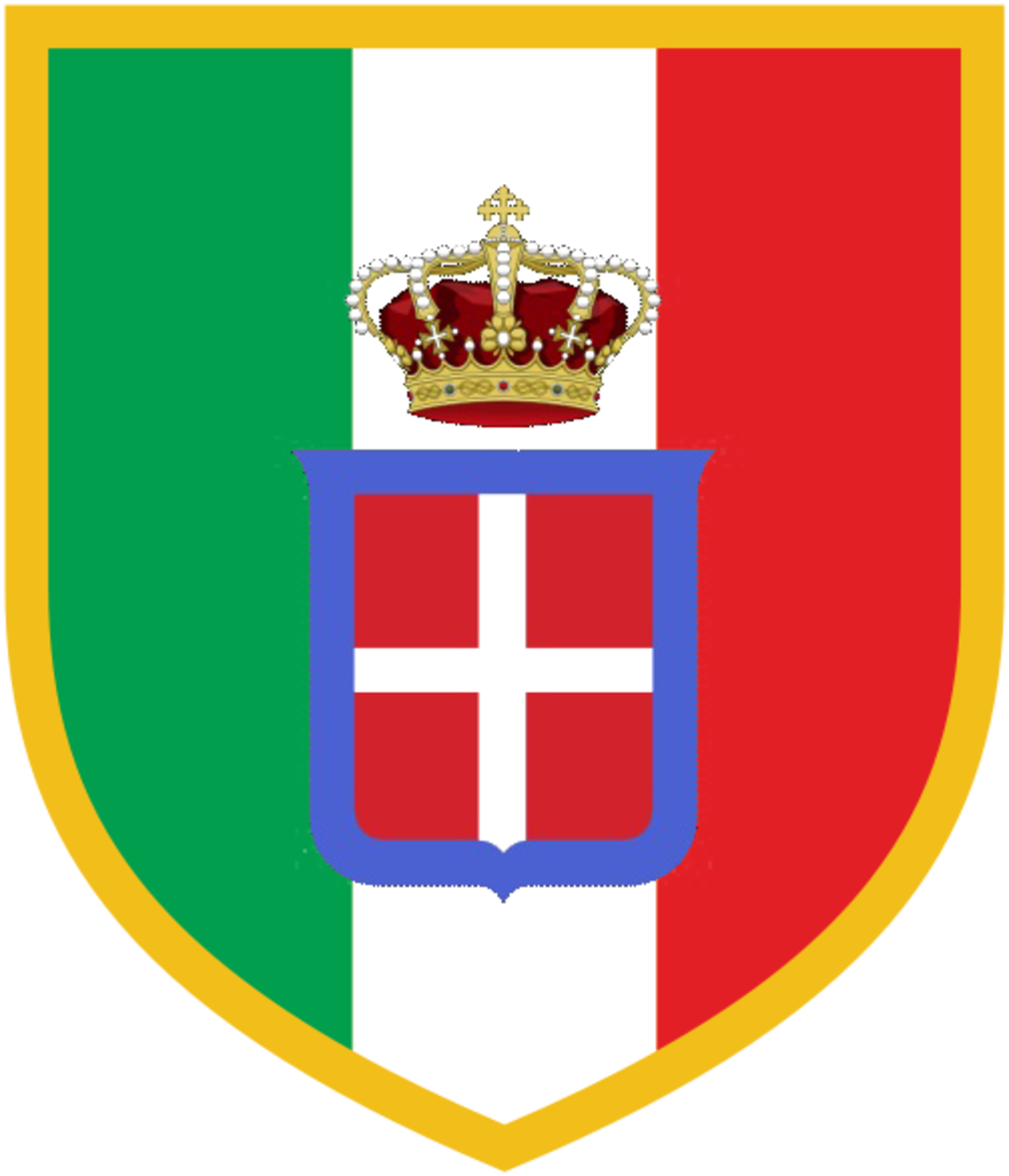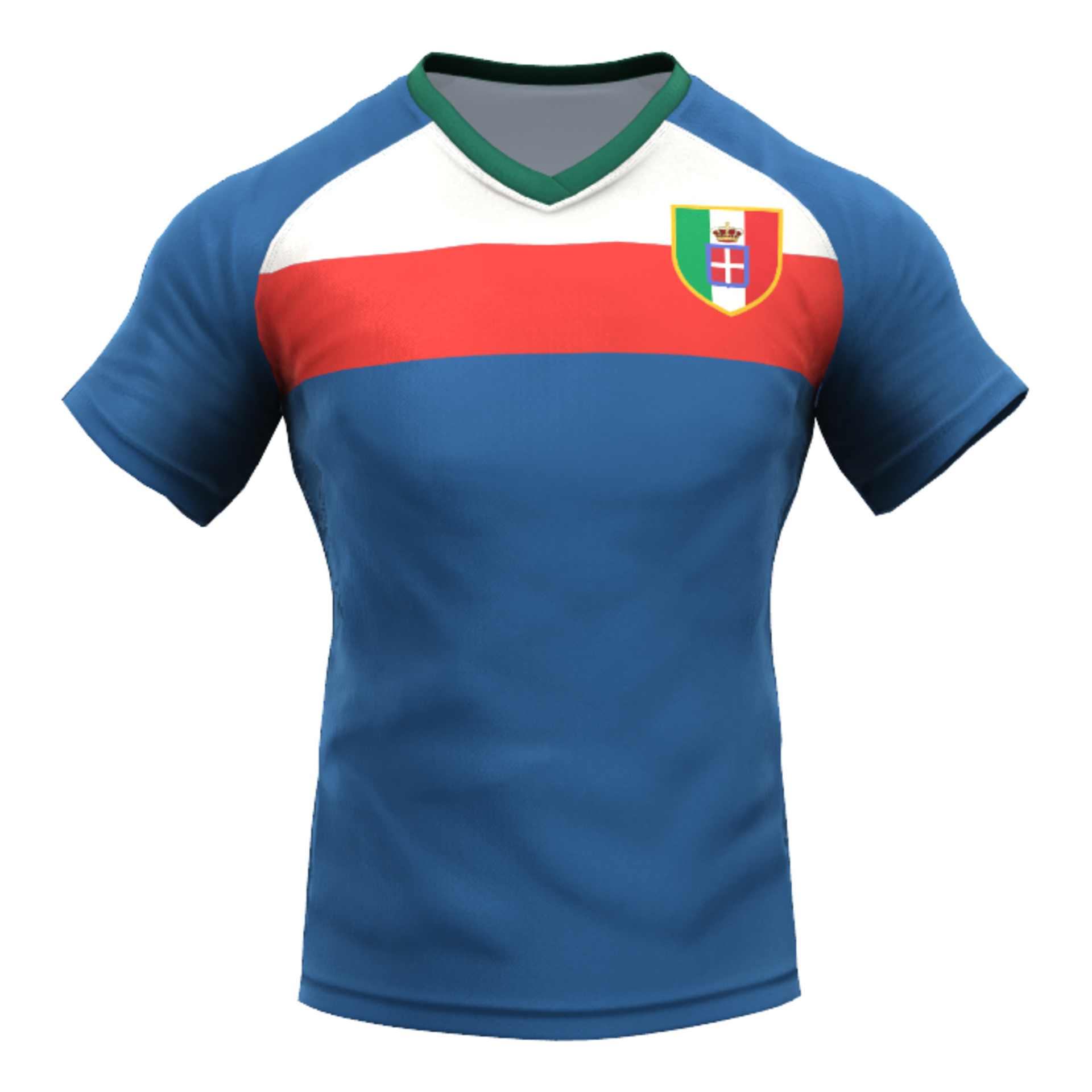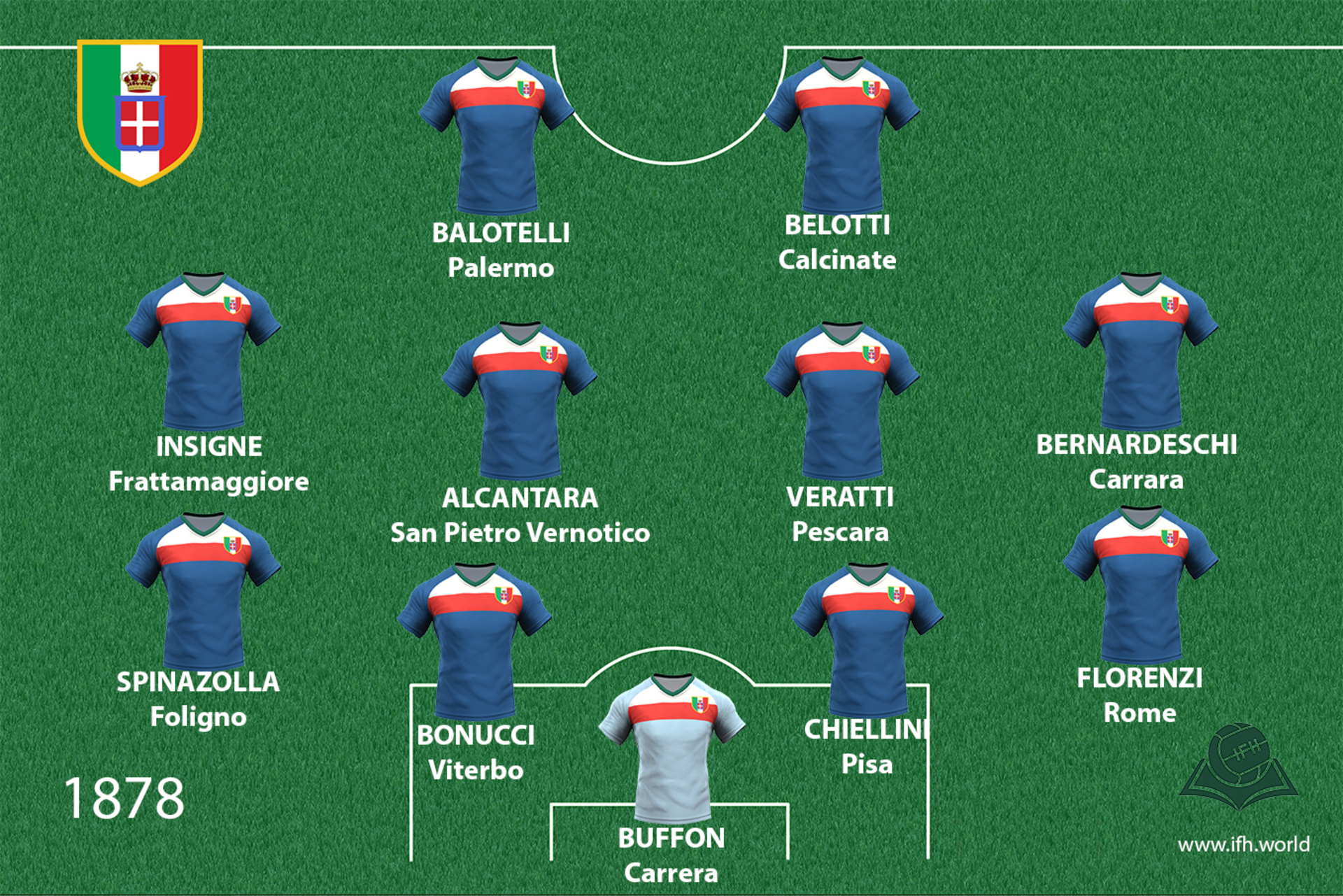Kingdom of Italy
During the 1860s and 1870s on the Apennine peninsula, smaller and larger countries and cities unite into a new, national, country – Italy. After this comes a several decades long process of creation of the Italian nation.

Coat of arms

Shirt
| Position | First name | Last name | Mjesto rođenja | Like | Dislike | |
|---|---|---|---|---|---|---|
| GK | Gianluigi | BUFFON | Carrera |
18 |
0 |
|
| GK | Gianluigi | DONNARUMMA | Castellammare di Stabia |
16 |
4 |
|
| DC | Giorgio | CHIELLINI | Pisa |
10 |
0 |
|
| DC | Leandro | BONUCCI | Viterbo |
12 |
3 |
|
| DC | Mattia | CALDARA | Bergamo |
2 |
2 |
|
| DRC | Andrea | BARZAGLI | Fiesole |
6 |
0 |
|
| DRC | Daniele | RUGANI | Lucca |
4 |
2 |
|
| DLC | Alessio | ROMAGNOLI | Anzio |
5 |
1 |
|
| DRL | Matteo | DARMIAN | Legnano |
3 |
2 |
|
| DRL | Mattia | DE SCIGLIO | Milan |
4 |
0 |
|
| DR | Andrea | CONTI | Lecco |
3 |
0 |
|
| DMC/DC | Daniele | DE ROSSI | Rome |
11 |
1 |
|
| MC | Claudio | MARCHISIO | Turin |
6 |
0 |
|
| MC | Lorenzo | PELLEGRINI | Rome |
6 |
1 |
|
| MC | Marco | VERATTI | Pescara |
7 |
0 |
|
| MC | Nicolo | BARIELLA | Cagliari |
0 |
0 |
|
| MC | Roberto | GAGLIARDINI | Bergamo |
3 |
2 |
|
| MC | Thiago | ALCANTARA | San Pietro Vernotico |
18 |
1 |
|
| MRC/DR | Alessandro | FLORENZI | Rome |
7 |
1 |
|
| ML/DL | Leonardo | SPINAZZOLA | Foligno |
1 |
1 |
|
| AMC | Nicolo | ZANIOLO | Massa |
2 |
0 |
|
| AMRLC | Giacomo | BONAVENTURA | San Severino Marche |
0 |
2 |
|
| AMRL | Antonio | CANDREVA | Rome |
1 |
3 |
|
| AMRL/SS | Federico | BERNARDESCHI | Carrara |
7 |
1 |
|
| AMRL/SS | Lorenzo | INSIGNE | Naples |
10 |
3 |
|
| AMRL/SS | Matteo | POLITANO | Rome |
1 |
1 |
|
| FRLC | Domenico | BERARDI | Cariati |
19 |
2 |
|
| FRLC | Stephen | EL SHAARAWY | Savona |
5 |
1 |
|
| FC | Andrea | BELOTTI | Calcinate |
5 |
3 |
|
| FC | Ciro | IMMOBILE | Torre Annunziata |
9 |
3 |
|
| FC | Mario | BALOTELLI | Palermo |
5 |
5 |
|
| FC | Patrick | CUTRONE | Como |
1 |
0 |
Back in 1820s, they began Risorgimento – the movement to create Italy as a unitary country. The term Italy was used before that as a geographic term for numerous smaller countries on the Apennine peninsula. The movement first manifested through the secret activities of Mazzinis “Young Italy”, and later in the unsuccessful revolutionary 1848. Since it was the only “Italian” country that wasn’t under French, Spanish, Habsburg or papal authority, Piedmont, initially with the help of France, started the creation of Italy. Its initial stage began with war of 1859-1860 with the liberation of Lombardy and other northern Italian regions from Habsburg rule. In the second and final phase (1866 – 1870), Venice and, in the end, Rome, along with the Papal state were incorporated into Italy. Since the pope was an opponent of unification, his successors refused to recognize the united Italy as a done deal until 1929.
Italy was halfway unified through careful maneuvering of politicians led by Camillo Cavour. The other half of the unification was performed through revolutionary war led by the forces of democratic-republican opposition in the form of red-shirted volunteers led by the Piedmontese Giuseppe Garibaldi, who defeated the Kingdom of Naples. After the end of the creation of the country, Italian ideologists began the creation of the Italian nation from the culturally and linguistically diverse population within the new Italy that was, in some cases, politically separated for centuries. An integral part of Italian politics became the irredentist movement (Italian irredento – unredeemed), i.e. the annexation of the territories Italy claimed certain historical rights to, which would mostly be directed toward territories in France and Austria-Hungary.
Sources
- Eric John HOBSBAWM, Doba kapitala : 1848-1875., Zagreb, 1989.
- Ivan PEDERIN, Dalmacija i Hrvati u vanjskoj politici bečkoga dvora, Zadar, 2005.
- Ignazio SILONE, Fašizam : njegov postanak i razvitak, Zagreb, 2006.
- ''Iredentizam'', http://istra.lzmk.hr/clanak.aspx?id=1193
- Coat of amrs: http://italianmonarchist.blogspot.hr/p/symbols.html
